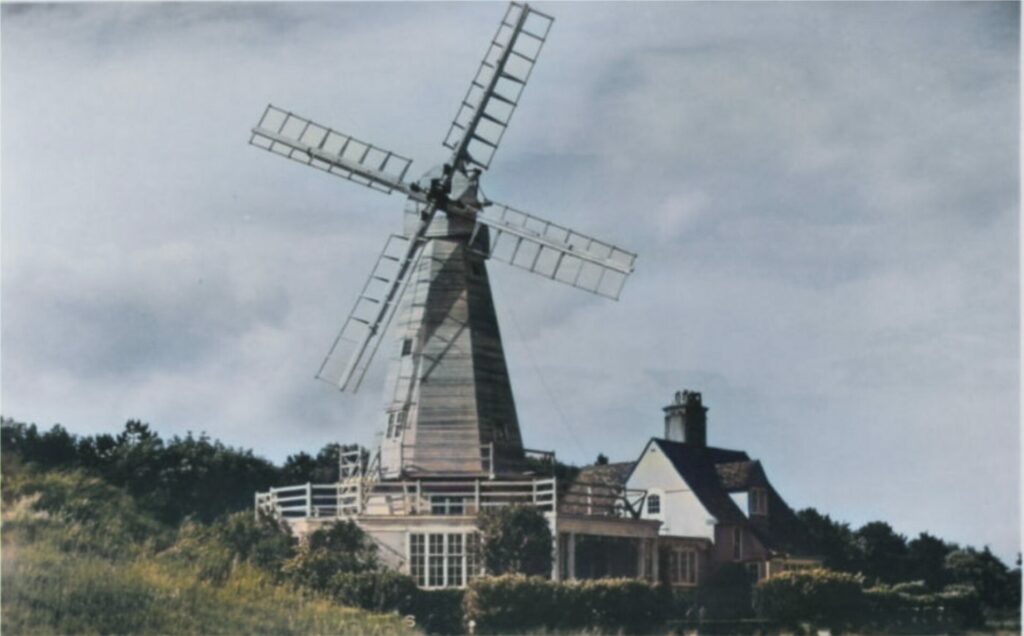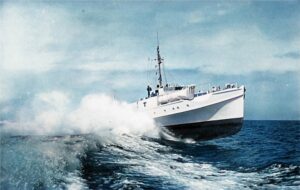David Chamberlain writes about the Deal windmill which played a part in the 1940s war effort.
Late in the summer of 1940, on the occupied shoreline of France, high powered binoculars were being trained at England’s South East Coast.
Behind the lenses were Nazi hierarchies studying the defenses to make ready for Hitler’s assault on Briton. Reichsmarshall Hermann Goering was viewing Dover Harbour and St Margaret’s Bay when he spied a white painted windmill close to the edge of the cliff face. This landmark showed up well alongside the two lighthouses, situated above the white cliffs at the South Foreland. He pondered that, after a successful invasion, he would like the windmill to be dismantled and reconstructed in his own German country estate – as a keepsake after the war. Goering, as head of the Luftwaffe, ordered that the mill should not come under attack from his aircraft. It was an unwise decision on his part.
The windmill had been assembled and completed in 1929 by Canterbury builders Holman Brothers, although it would never be used to mill flour. It was commissioned as a peculiarity to accompany the house of Sir William Beardsell. Wood framed and slightly smaller than a normal three-storied smock mill, it rested on a brick base. This ‘curiosity’ was not just a whim, which gave a great view of the Straights of Dover, but was also functional. Four sweeps of the mill drove a DC dynamo which generated electricity for the house and accommodation. The premises comprised of five bedrooms, two bathrooms, three reception rooms, breakfast room, kitchen and a cellar. Sir William died in 1940 at the age of 75 and the War Office took over all the land and buildings at the top of the cliffs and denied public access. The area would be an advantage point to observe enemy manoeuvres across the Channel and also a place to install the large long range guns to protect it.
The Battle of Britain thwarted the expected German victories and the German invasion plans were cancelled. It was then the Channel took on a new menace to the Allied shipping. In England they were known as E-Boats (Enemy boats), however, in Germany they were called S-Boats (Scnellboots) or fast boats. These audacious enemy craft patrolled all areas of the English Channel using their speed to pick off Allied vessels. In July, 1940, one had attacked and sunk the large 375 ton anti-submarine trawler, HMT Cayton Wyke, right under the noses of the navy close to the South Goodwin lightship. The British equivalents were Motor Torpedo Boats (MTB), which had comparable qualities such as speed and armament and were based at Dover. However, because of the lack of intelligence, they were seldom in contact with the enemy boats.
The windmill would now take on a different roll. Fluent German linguists of the Women’s Royal Navy Service (WRNS) took over the accommodation and were trained in the use of marine radios. Installed in the mill was a radio communication system tuned into the E-Boats frequencies – which the WRNS monitored. As the E-Boat messages came in they were translated and telephoned to Dover Castle, the headquarters of Admiral Bertram Ramsay head of operations in the Channel. Maybe because of Goering’s orders not to damage the mill, or because it looked harmless, no action was taken to destroy it. Secrecy was adhered to and the WRNS had to don civilian clothes if they made a rare visit to the village of St Margaret’s.
After the war the property was put up for sale and many renovations were applied to make it habitable. The mill and house are now a listed Grade 11 buildings situated in four acres of land and is now a private residence.




